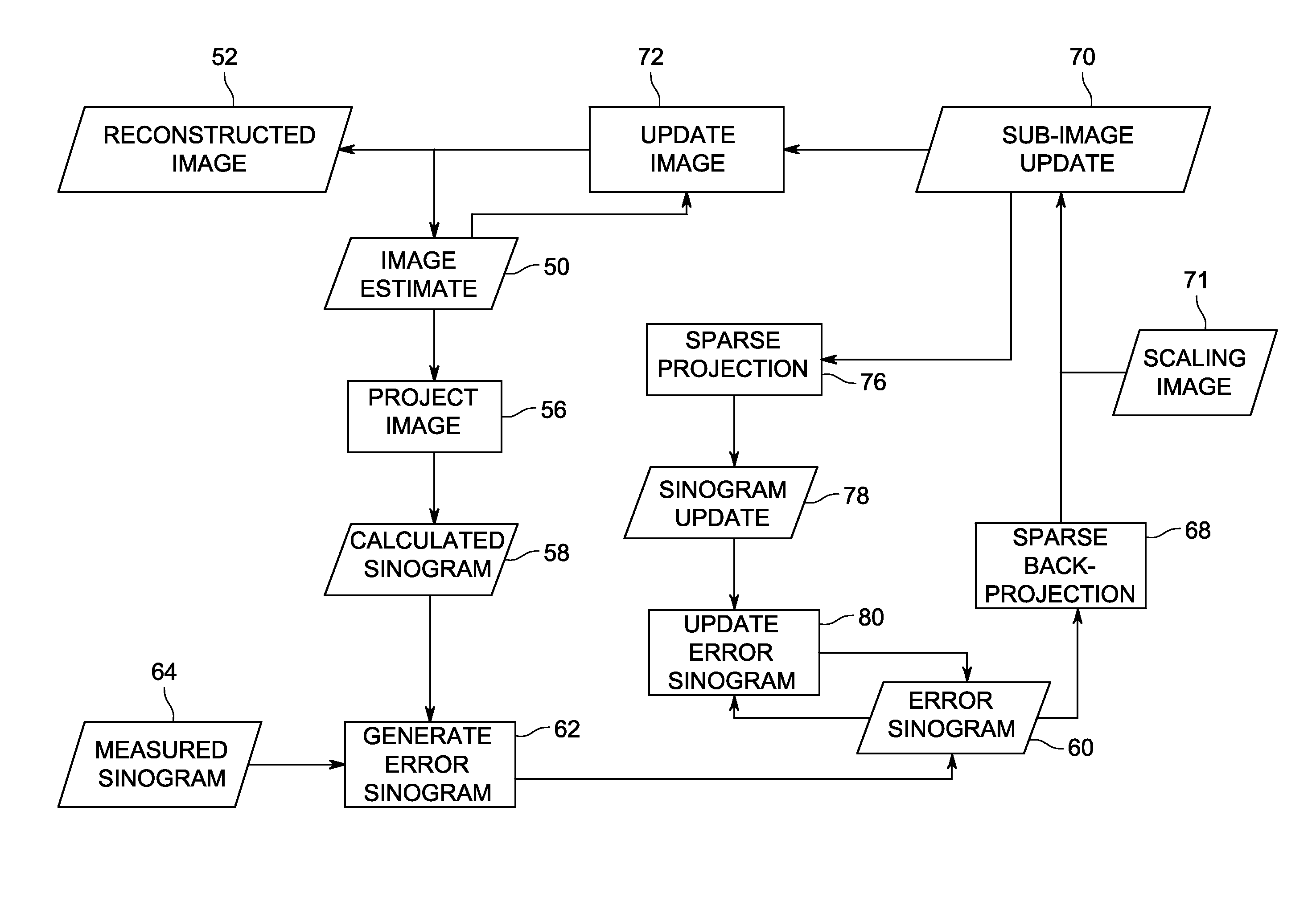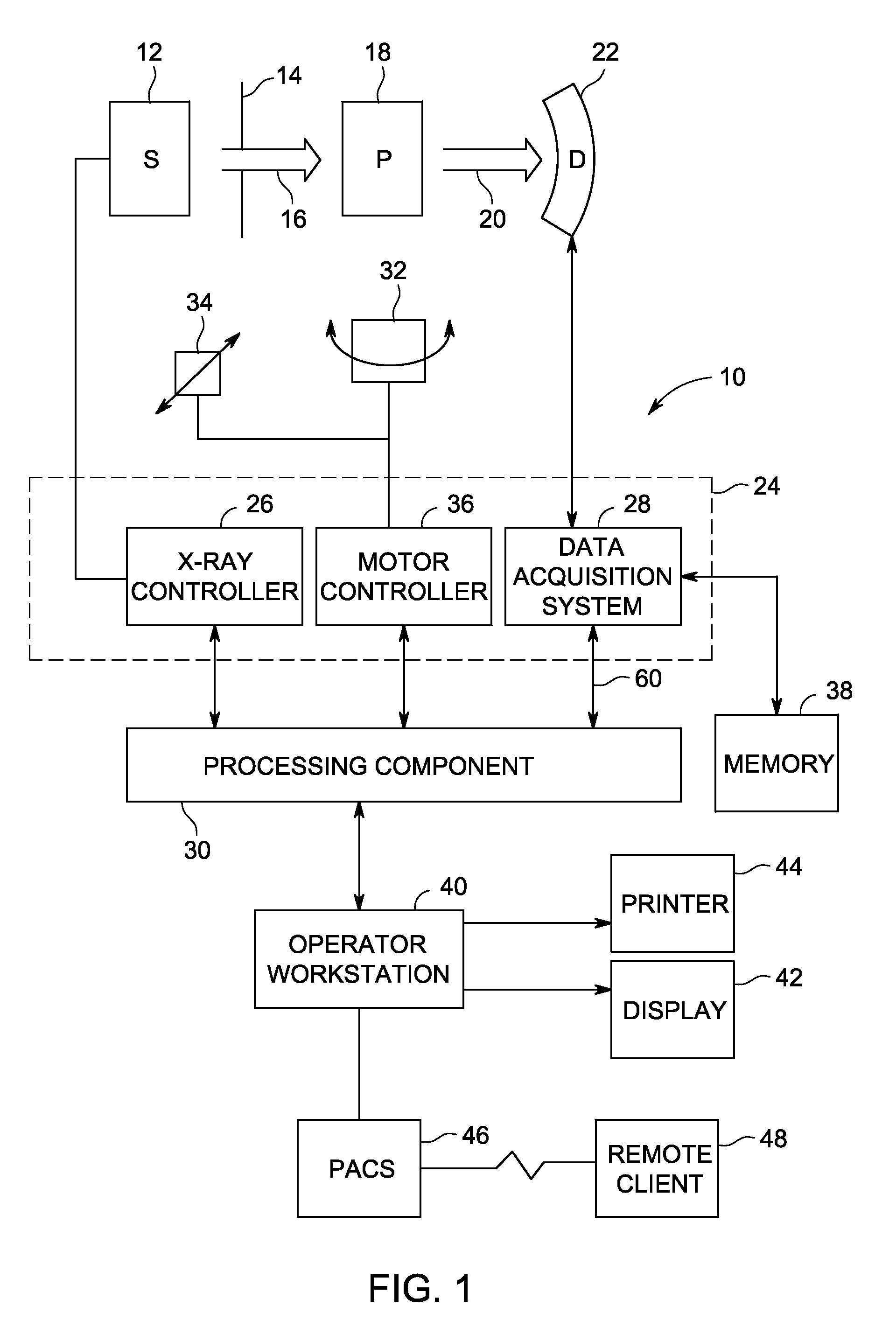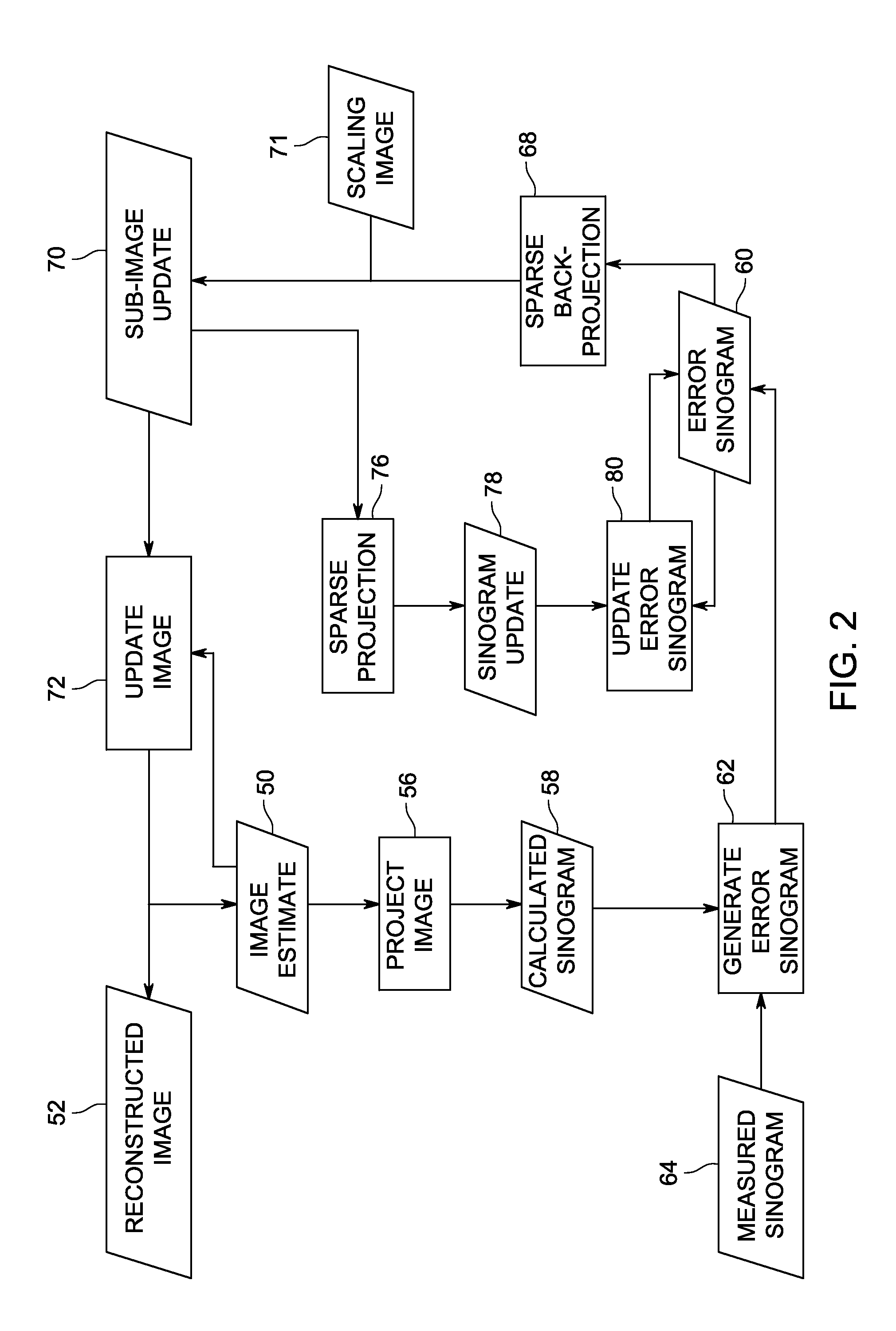System and method for iterative image reconstruction
a system and image reconstruction technology, applied in tomography, instruments, diagnostic recording/measuring, etc., can solve the problems of requiring an order of magnitude or more computational effort for iterative reconstruction algorithms, and affecting the accuracy of iterative reconstruction algorithms
- Summary
- Abstract
- Description
- Claims
- Application Information
AI Technical Summary
Benefits of technology
Problems solved by technology
Method used
Image
Examples
Embodiment Construction
[0022]The present disclosure relates to image reconstruction employing iterative reconstruction approaches in which blocks or subsets of pixels or voxels are simultaneously updated via direct inversion of a matrix (e.g., a Hessian matrix), corresponding to the respective subset of pixels or voxels. In certain implementations an approximation of the Hessian matrix may be employed, as opposed to the true Hessian matrix. Further, in certain embodiments enforcement of minimum values may be employed, such as to enforce non-negativity of the values being processed. In addition, in certain embodiments the subset of voxels may include voxels at different slice locations within the three-dimensional volume being imaged.
[0023]With the foregoing in mind, FIG. 1 illustrates diagrammatically an imaging system 10 for acquiring and processing projection data to produce reconstructed images. In the illustrated embodiment, system 10 is a computed tomography (CT) system designed both to acquire origi...
PUM
| Property | Measurement | Unit |
|---|---|---|
| computed tomography | aaaaa | aaaaa |
| CT | aaaaa | aaaaa |
| positron emission tomography | aaaaa | aaaaa |
Abstract
Description
Claims
Application Information
 Login to View More
Login to View More - R&D
- Intellectual Property
- Life Sciences
- Materials
- Tech Scout
- Unparalleled Data Quality
- Higher Quality Content
- 60% Fewer Hallucinations
Browse by: Latest US Patents, China's latest patents, Technical Efficacy Thesaurus, Application Domain, Technology Topic, Popular Technical Reports.
© 2025 PatSnap. All rights reserved.Legal|Privacy policy|Modern Slavery Act Transparency Statement|Sitemap|About US| Contact US: help@patsnap.com



